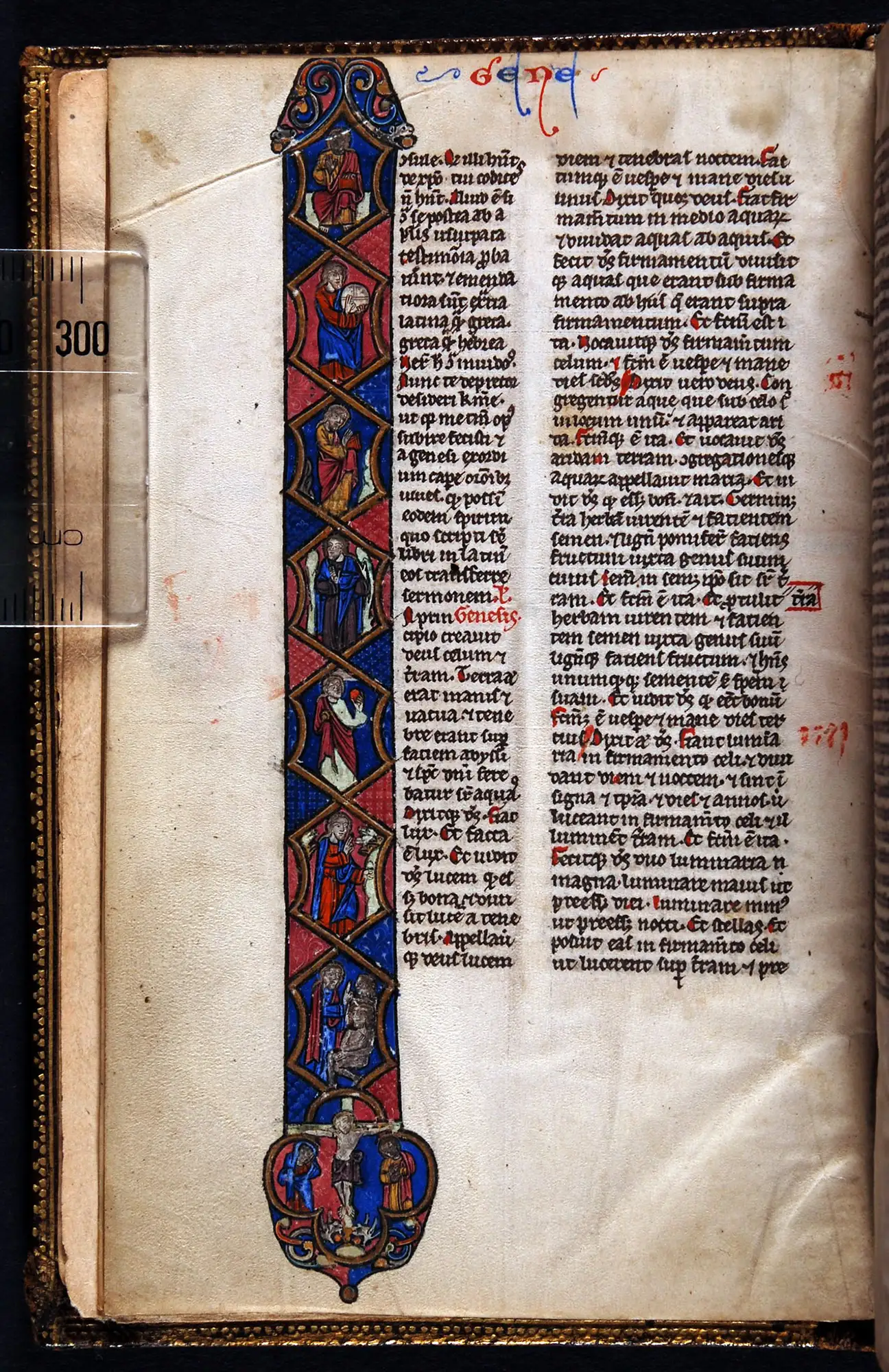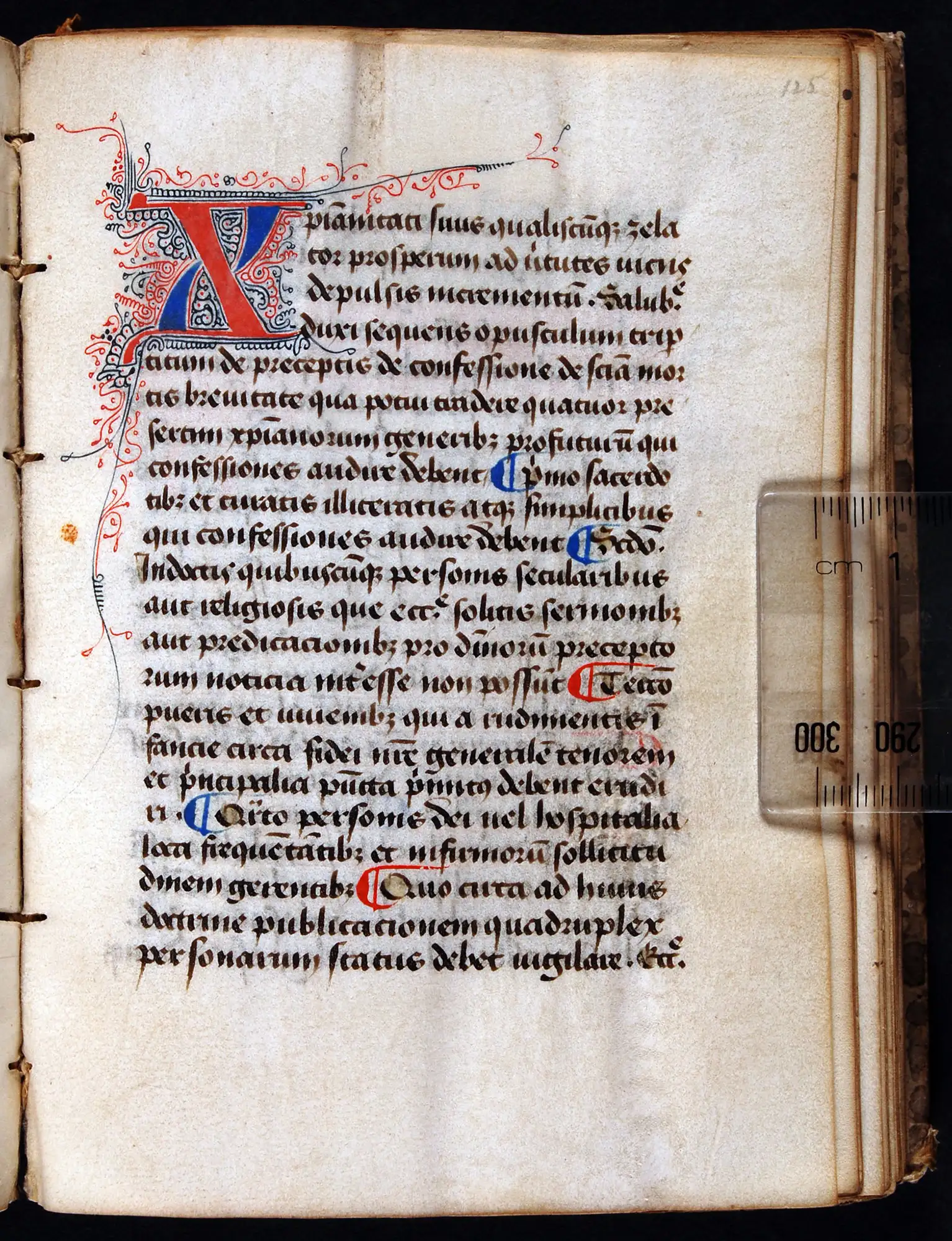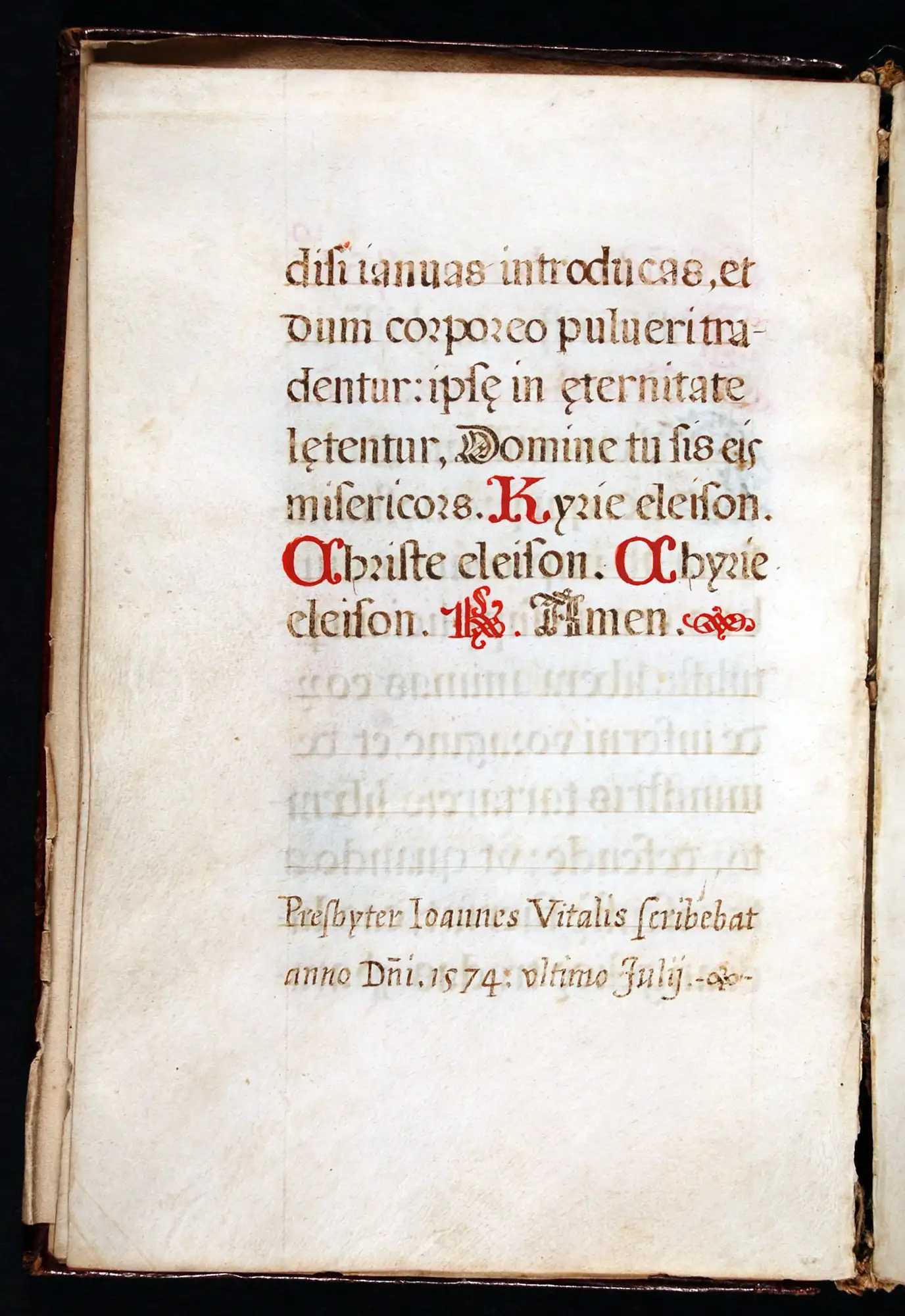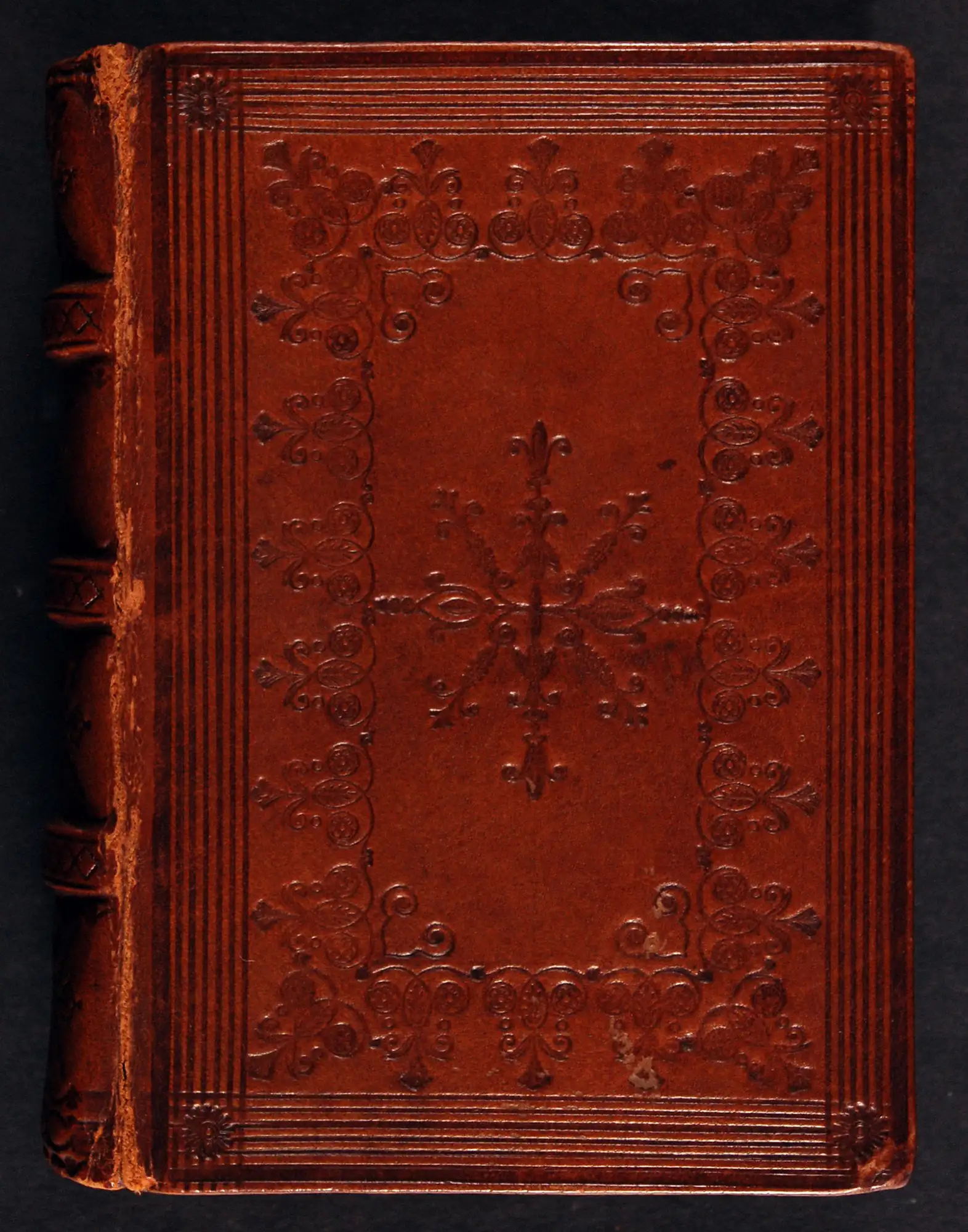Case 19

Bible, in Latin. Northern France (perhaps Paris), thirteenth century. Reed MS4b.
The text of this Vulgate Bible is written in an extremely small Gothic bookhand on very fine vellum. It is open at the book of Genesis, where a historiated initial ‘I’ forms a vertical panel in which the seven days of Creation and the Crucifixion are depicted in gold-framed cusped medallions on alternating blue and deep-pink grounds.
This small Bible is now divided into two volumes, of which this is the first. The second volume is in the Bodleian Library at Oxford.

Collection of theological treatises, in Latin. Northern France, fifteenth century. Reed MS7.
Purchased from the London dealer R.A. Atkinson in 1919, this manuscript of 146 leaves was Reed’s first medieval manuscript. Known as Reed MS7, it comprises six texts on spiritual meditation and on the virtues and vices.
The six texts are: Pseudo-Augustine, Liber Soliloquorum; Jean Gerson, Opusculum Tripartitum; Jean Gerson, Examinatio Conscientiae; Hugo Ripelin, Compendium Theologicae Veritatis; Pierre d’Ailly, Epilogus de Quadruplici Exercitio Spirituali; and Pseudo-Augustine, De Miseria Huius Mundi.
The MS is open at Opusculum Tripartitum.

Manual, in Latin. Northeast Italy (probably Venice), 31 July 1574. Reed MS9.
In this Renaissance-era manuscript, the scribe (named as Johannes Vitalis) uses the older, unfashionable Gothic script, rather than the contemporary Humanistic style. This is perhaps to evoke a sense of history and authority. His colophon (or signature) statement, however, is written in a contemporary script. The large capital in gold on a square red ground is distinctly Renaissance in style.
The text comprises the end of the Antiphons for the Funeral Service; the colophon of Johannes Vitalis; and the opening of the Litany of the Blessed Virgin Mary.

Book of Hours, in Latin. Netherlands, ca. 1450. Reed MS12.
Books of hours were small portable prayer books for laypersons, a counterpart to the much more extensive breviaries for the clergy. The core of a book of hours consists of a calendar of saints, the Hours of the Virgin, the Penitential Psalms with the Litany of the Saints and the Office of the Dead.
This small fifteenth-century book of hours is bound in eighteenth century blind-stamped calf. It was owned by Alexander Boswell (1706-82), judge and eighth Laird of Auchinleck, and subsequently his son, James Boswell (1740-95), biographer of Samuel Johnson.



